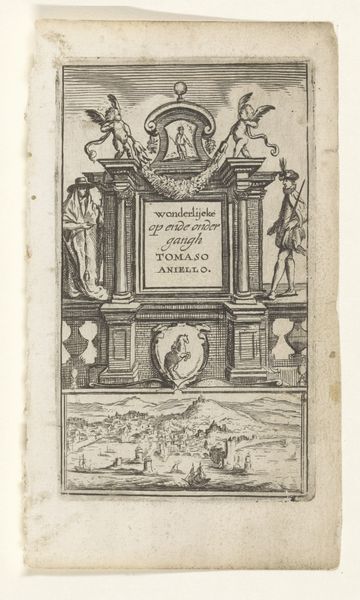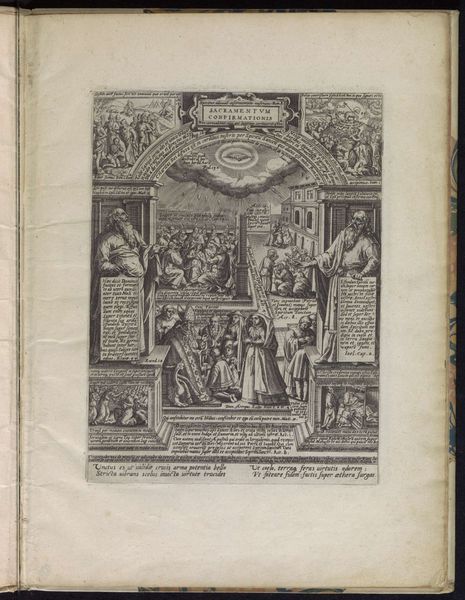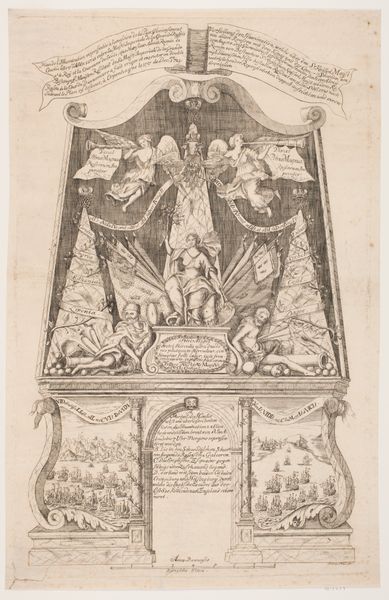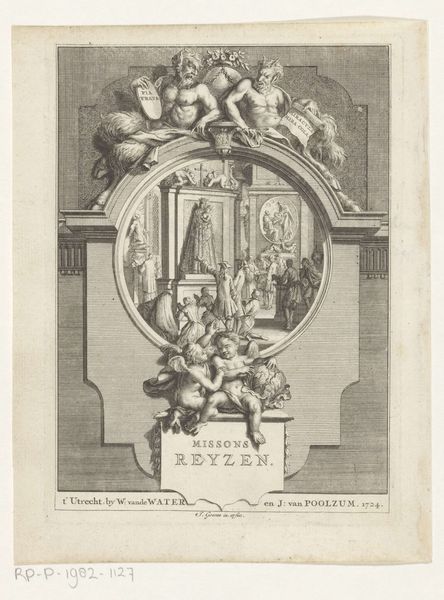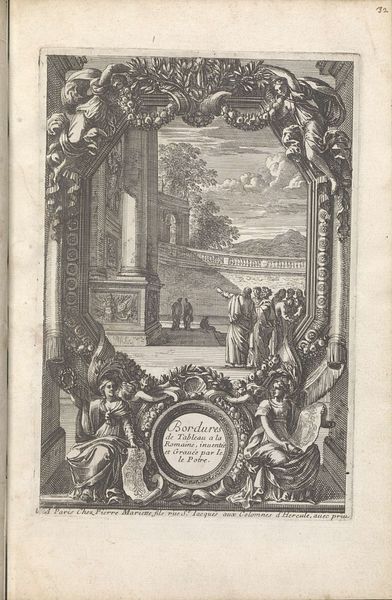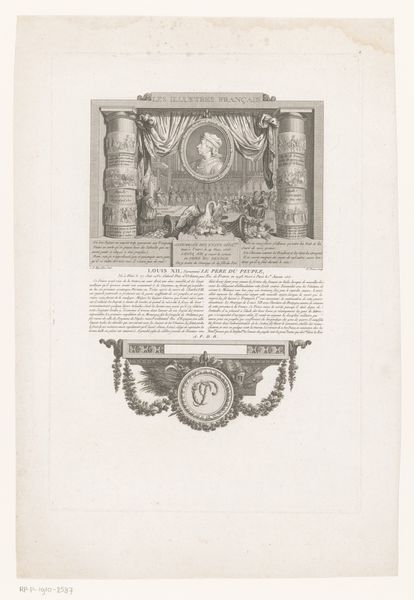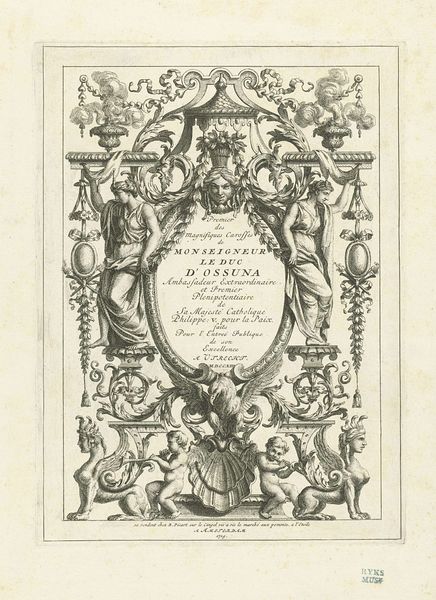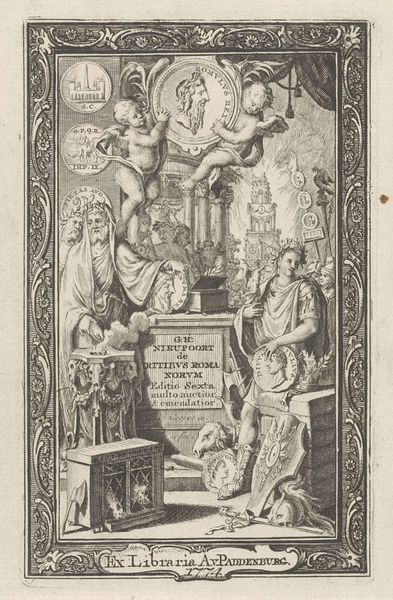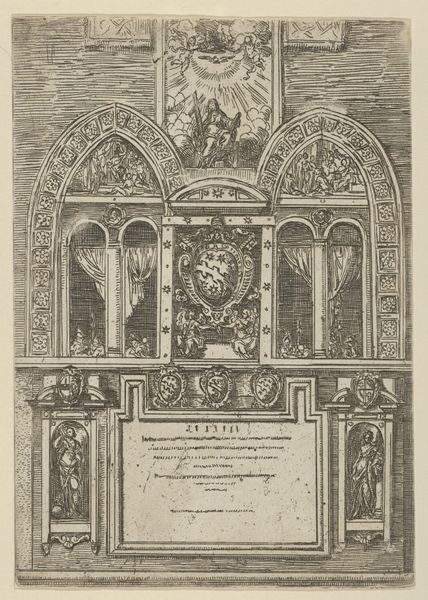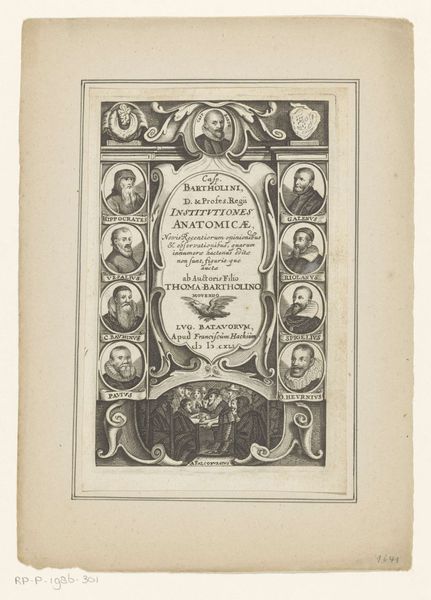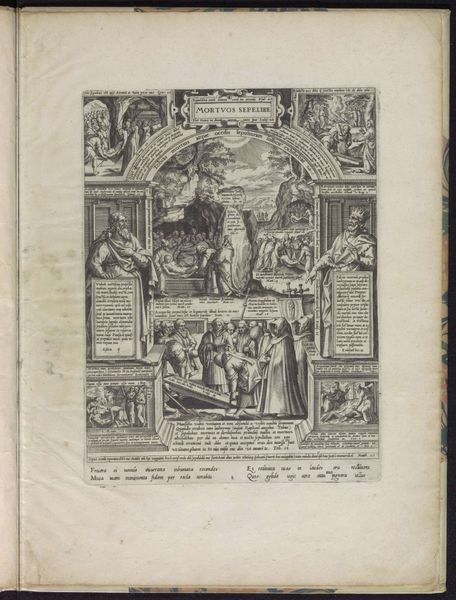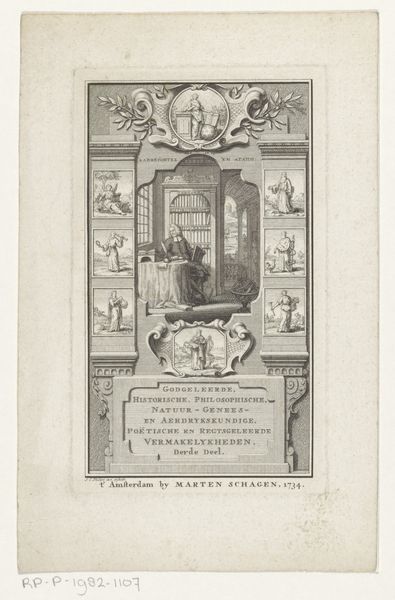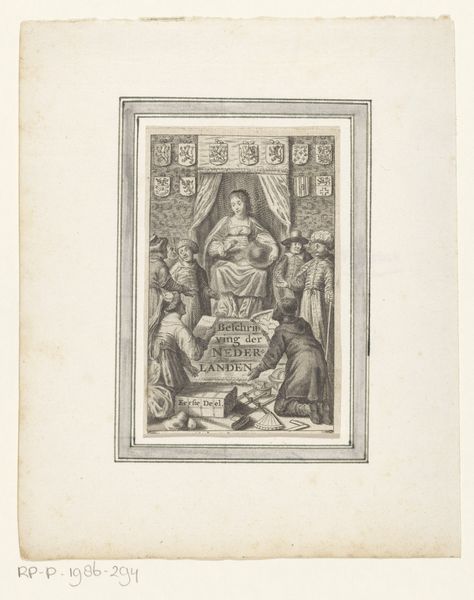
graphic-art, print, engraving
#
graphic-art
#
allegory
#
baroque
# print
#
engraving
Dimensions: height 144 mm, width 88 mm
Copyright: Rijks Museum: Open Domain
Curator: Here we have an engraving from 1698, currently held in the Rijksmuseum. It's titled "Zeven Vrije Kunsten," which translates to "Seven Liberal Arts." The piece is anonymous, yet its elaborate detail offers a fascinating glimpse into the artistic sensibilities of the Baroque period. Editor: Whoa. It’s like looking into a dream—or maybe one of those dusty, leather-bound spellbooks from a fantasy novel. Everything feels both precise and…utterly bonkers. There’s so much going on! Curator: Indeed. Allegorical representations of the seven liberal arts are depicted: grammar, rhetoric, logic, arithmetic, music, geometry, and astronomy, arranged around an elaborate cartouche filled with text. It likely functioned as the frontispiece to an academic book. These arts were foundational to classical education. Editor: Well, whoever designed it sure wasn't shy! Look at all those swirling flourishes. It feels incredibly ornate, like walking through a meticulously sculpted garden but, like, on paper. Is it supposed to be balanced? All those figures kind of make my head spin, but not in a bad way, kinda like how I felt after too many espressos while studying for college finals. Curator: Baroque art certainly aimed for dramatic effect. The abundance of detail was a way to showcase knowledge and learning. The figures representing the arts are idealized, drawing from classical sculpture. It reinforces the authority and pedigree of classical education. Editor: Pedigree, that's the perfect word for it. It’s fancy pants academia on parade! I'm especially drawn to that cherub face peering out from the bottom center, below the writing and above an doorway! It seems amused by all the scholarly fuss. Does it means something or is just pure decoration? Curator: Cherubs were a common motif during the Baroque, representing divine inspiration and perhaps even playful intellectual curiosity. Their presence reminds the viewer that even within rigorous academic pursuits, there’s space for creativity and enjoyment. The depiction also speaks to the intersection of classical learning and religious belief during that time. Editor: So, basically, it’s saying, "Learn your stuff, but don't forget to have a bit of fun and let your imagination soar?" Not bad for a centuries-old print! Curator: Precisely! This print reveals not only artistic conventions but also cultural values and intellectual priorities of the era. Editor: Right. It’s not just about looking pretty, it's like a time capsule packed with old-school thoughts and dreams. Makes me appreciate my textbooks a little more. Curator: A sentiment I echo. Its layered composition draws us into the world of knowledge, while echoing the world's aesthetic standards and artistic practice of its time. Editor: You are absolutely right. All I see is ink, line, and meaning; but when put in historical context and seen in light of these facts, I feel inspired and eager to start researching the topic more. Thanks.
Comments
No comments
Be the first to comment and join the conversation on the ultimate creative platform.
